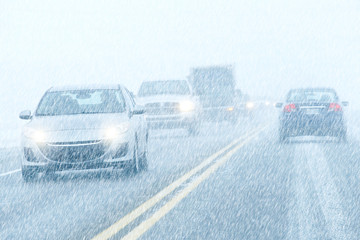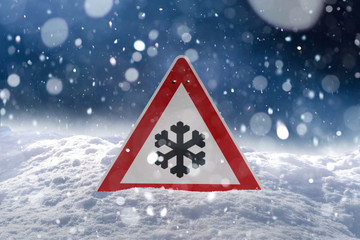Winter is coming, and while Dallas isn’t known for brutal winters, many people travel to colder destinations for the holidays. Whether you’re staying in Texas or heading to snowier states, preparing your vehicle for colder weather can make all the difference in a safe, smooth trip. Here’s a guide to help you get your car winter-ready, especially if you’re traveling north.

1. Check and Swap Out Your Tires if Needed
In Dallas, all-season tires work well for most of the year. However, if you’re heading to regions with ice, snow, or freezing temperatures, consider switching to winter tires. These tires are designed to perform in low temperatures and provide better traction on snow and ice. Even if you stick with all-season tires, make sure they have enough tread to handle wet or slippery conditions.
2. Test the Battery
Cold weather can put a strain on your vehicle’s battery, especially if it’s more than three years old. Take a few minutes to have your battery tested at a local shop. Many places offer this service for free, and it’s worth checking to make sure it’s ready for colder temperatures. If your battery is weak, it’s best to replace it before winter trips.
3. Keep Your Fluids Full and Suitable for Winter
- Antifreeze: Ensuring your coolant system has the right mix of antifreeze and water is key to preventing freezing in your engine. Check your owner’s manual or ask your mechanic to make sure your antifreeze is at the proper level.
- Windshield Washer Fluid: Regular windshield washer fluid can freeze in colder temperatures, so opt for a winter-specific fluid if you’re traveling to cold regions. Also, keep your wipers in good condition—they’ll be essential for clearing ice, sleet, and road salt off your windshield.
4. Check and Replace Your Oil if Necessary
Cold weather can make motor oil thicker, which can affect how well it circulates. If you’re headed to freezing temperatures, you may want to switch to a winter-grade oil. Many oil-change services can help you choose the best option for your travel needs.
5. Keep Emergency Supplies in Your Vehicle
No matter where you’re driving, it’s smart to have an emergency kit in the car. Here’s what to include:
- Blankets or extra warm clothing to stay warm if you get stuck.
- Ice scraper and small shovel for snowy or icy areas.
- Jumper cables to jump-start your car if the battery dies.
- Flashlight with extra batteries in case you need to check something in low light.
- Non-perishable snacks and bottled water for sustenance if you’re stuck for a while.
6. Prepare for Slippery Roads
If you’re unfamiliar with winter driving, keep a few tips in mind:
- Drive slower than usual, especially on icy or snowy roads.
- Avoid sudden braking and quick turns, as these can cause you to lose control.
- Maintain extra distance between your car and others to allow more time for braking.
7. Keep Your Gas Tank at Least Half Full
In cold weather, it’s wise to keep your gas tank at least half full, especially if you’re traveling. This can prevent gas lines from freezing and gives you peace of mind in case you run into traffic or road closures.
8. Consider Roadside Assistance for Added Peace of Mind
If you don’t already have it, roadside assistance can be a lifesaver in winter conditions. Many insurance providers and dealerships offer affordable roadside assistance plans that cover you if you need help with a breakdown, flat tire, or other issues.
Stay Safe and Drive Confidently This Winter
Winterizing your vehicle doesn’t have to be overwhelming, but it does take a bit of preparation. Whether you’re heading into colder climates or just getting ready for chilly Dallas mornings, a well-prepared car makes for a much safer winter season. Stay safe, and enjoy your travels!

